Flora of Japan
| Travel Reports by Chashitsu | view profile of Chashitsu |
| previous post |
| next post |
| Note: The opinions and views expressed in this user report are those of the individual author and do not necessarily reflect the opinions and views of japan-guide.com. |
July 15, 2017 - Flora of Japan
The UK flora (and fauna) was largely wiped out during the last ice age and has been subsequently enhanced by imports from South East Asia, China and Japan in particular, through efforts of the 18th century plant hunters including Thunberg, Seibold and others, whose names have been used to define many species. Despite the wealth of indigenous flora available to the Japanese gardener, plants are used for their texture and form and not colour. Colourful plants are used as seasonal indicators. This article presents some of the main species to be found in both the wild and in the gardens and follows the seasons. Japan has four main regions of plant hardiness from the warm temperate zones at lower altitudes of Kyushu and Shikoku to the colder temperate zones of the lower altitudes of Honshu, the boreal zone at higher altitudes, to the sub-artic zone of the Hokkaido.
The garden centre culture as seen in the UK is not to be generally found in Japan, which has a history of specialist nurseries, where plants can be bought and even sold back. However plants are also sold in some of the main flea markets, such as To-ji temple in Kyoto.
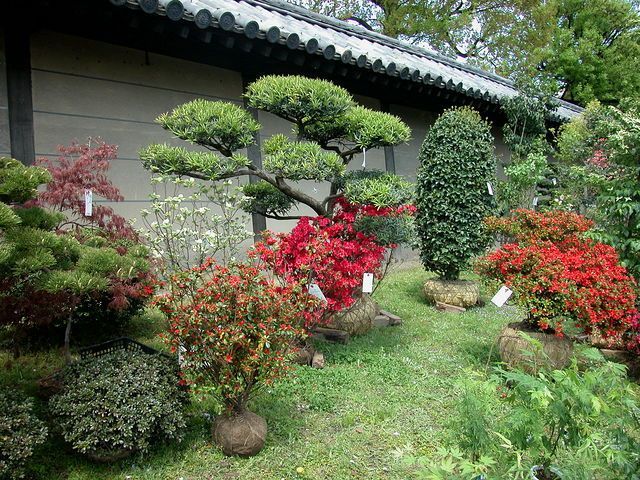
The season starts with the plum blossom, which emerges on bare branches in February onwards when the snow is often lingering on. It has long been featured in artistic scrolls. The plum (Prunus Ume) is technically an apricot although rarely referred to as such. It’┐Įfs bitter fruit is pickled and widely used. Plum blossom features prominently at Kairaku-en garden in Mito with it’┐Įfs plum ambassadors, the Koishikawa Koraku-en garden in Tokyo and the Kitano Tenmangu shrine in Kyoto.
The plum is followed by the peach and cherry, which is celebrated, almost worshipped by most Japanese as the true harbinger of Spring. There are over one hundred varieties of cherry giving a range of flowering from late February to early May and progress on the Sakura front is national news. The most common specie is the single five petal Somei Yoshino, which is alleged to have been cloned from a single tree planted in the mountains of Yoshino and in their thousands. The varieties include single and double petalled blossom with as many as one hundred petals in the case of the chrysanthemum cherry. Colours are mainly white and pink with some greenish yellow species (Ukon) and may be found in standard and weeping forms. A personal favourite is the deep pink, weeping Shidare zakura. The cherry is used in gardens in a limited way as a specimen tree but widely used in the main parks and stroll gardens, castle grounds, road-sides, canal-sides and rail tracks. The blossom is only open for about 8 days and at it’┐Įfs best for only 2-3 days, which is party time. Viewing is known as hanami and the parks are full of party goers at this time. The sakura front moves steadily north reaching Kansai and the Kanto during early April and Southern Hokkaido a month later.
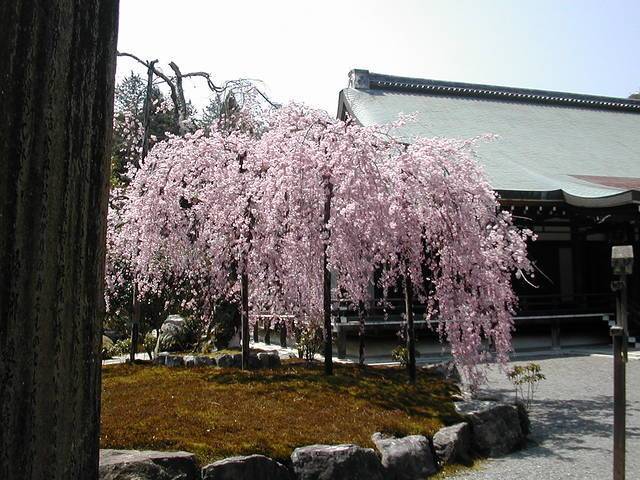
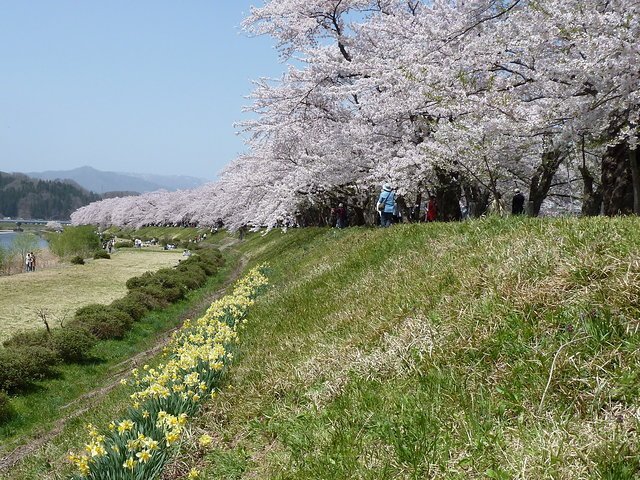
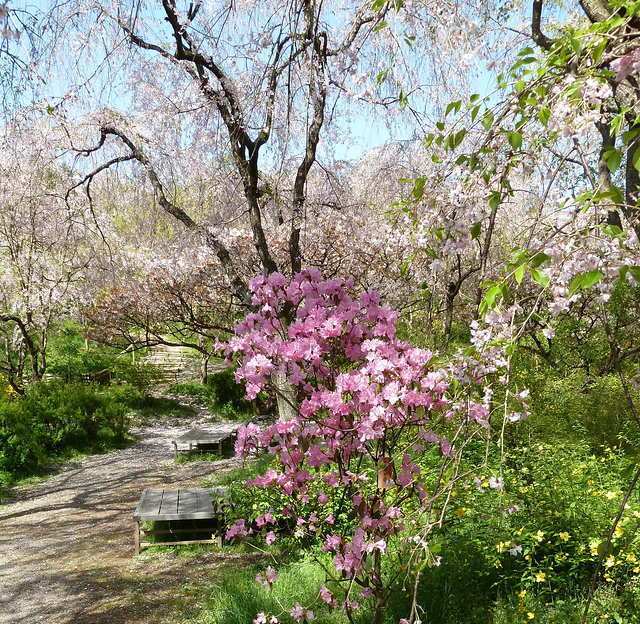
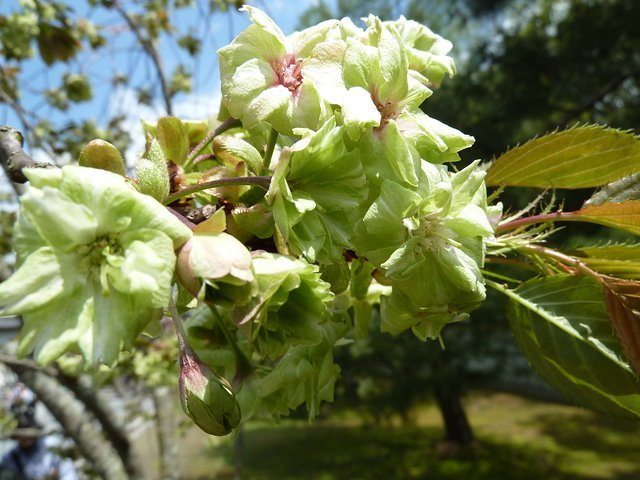
Some twenty years ago European plants and bulbs were rarely seen in Japan but today they are widely used along with roses; good displays of tulips and muscari can be seen in Showa Kinen park in Tokyo and Nagoya. Joseph Condor designed a building with rose garden at Kyu Furukawa in Tokyo, which would not look out of place in Minehead, England. Daffodils now appear often under the cherry trees along the rivers banks and are a popular sight.
The magnolia and camellia are common early bloomers in both the countryside and gardens. The Camellia Sinensis is, of course, used for making tea for which Uji city is particularly famous. However it is the evergreen azalea, which must take pride of place in the latter weeks of April with the Azalea festival held at the Nezu shrine in Tokyo being a popular attraction. The Mimurodo-ji temple near Uji, known as the flower temple boasts some 20,000 azaleas covering several hectares of hillside and is so prominent, it’┐Įfs colour can be seen from a kilometre away.

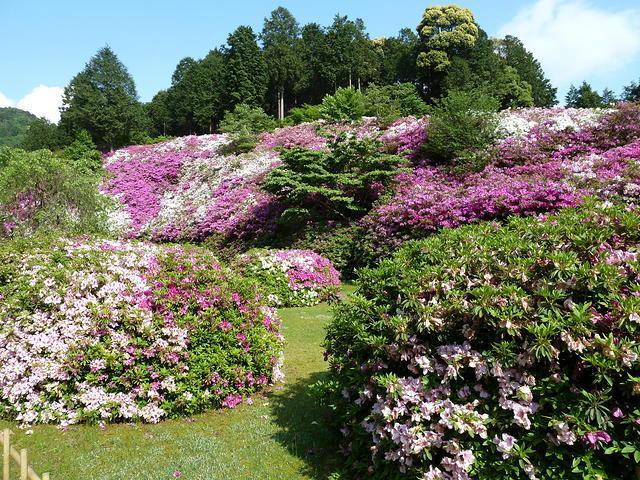
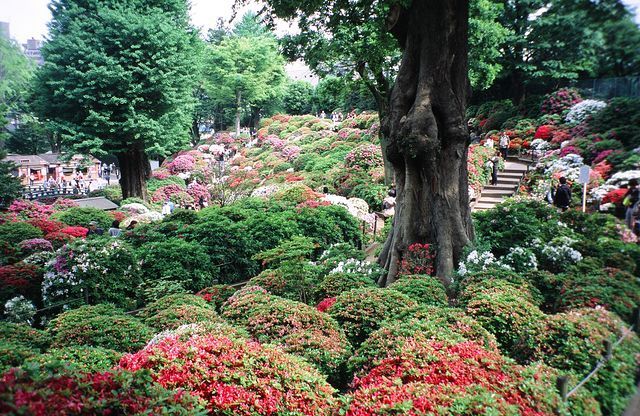
With the azaleas giving way to Golden Week in early May, the wisteria assumes prominence with spectacular displays at the Kawachi Fuji flower garden with it’┐Įfs extensive flower tunnels and ancient trees. Wisterias can be commonly found in most cities with some rather good examples in San no Machi old merchants street in Takayama.
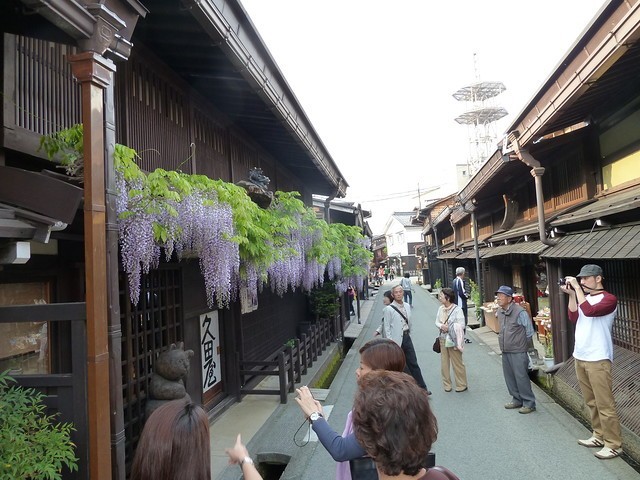
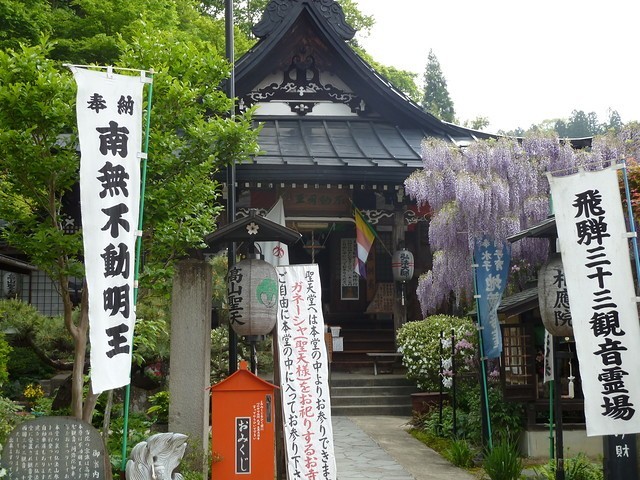
The peony is found in a few gardens; on the South coast at Kamakura in the Tsurugaoka Hachimangu shrine garden where they sit under parasols to protect them the May sun. On the North coast near Matsue at Yuushi-en garden they grow all year round, not only in the peony house but also outside in the garden. In November they were under the protection of rice straw hats owing to the metre or so of snow experienced in the winter. Yuushi-en garden is on a volcanic caldera with extremely rich fertile land and the garden is known not only for it’┐Įfs peonies but it’┐Įfs well manicured trees and garden.
Throughout May the Fuji five lakes area host a festival of Shibazakura, known as Pink or Phlox Moss. The festival is planted with some 800,000 plants of a few varieties of pink, purple and white flowers making a spectacular display with Mount Fuji as a backdrop. Also to be found at that time are beautiful fields of anemones. It is a plant I have occasionally seen in road-side gardens in Takayama. (images available on Japan-Guide.com).
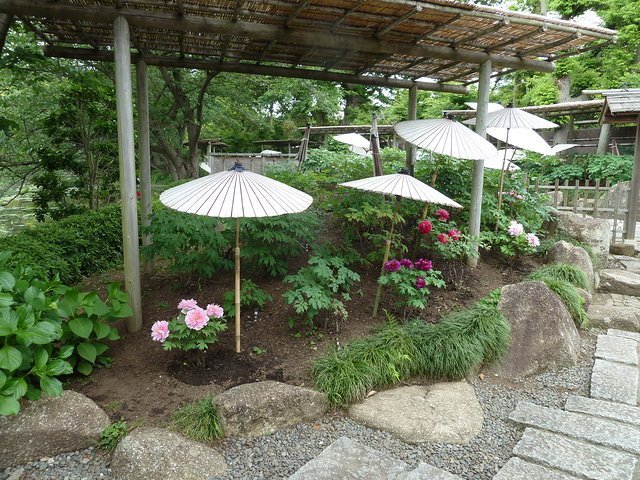
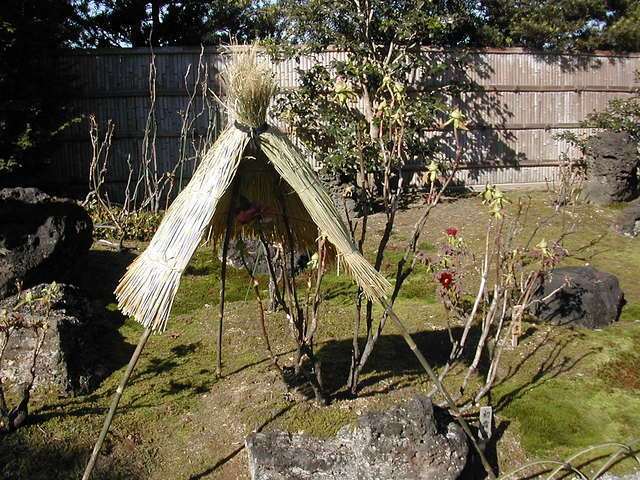
A common plant, with which we are familiar in the UK and found in a number of gardens is the white Spirea with it’┐Įfs beautiful arching floral branches. Similarly, the evergreen Nandina Domestica, the heavenly bamboo is also found with its white flowers, red new foliage and bright autumn berries in a number of gardens.
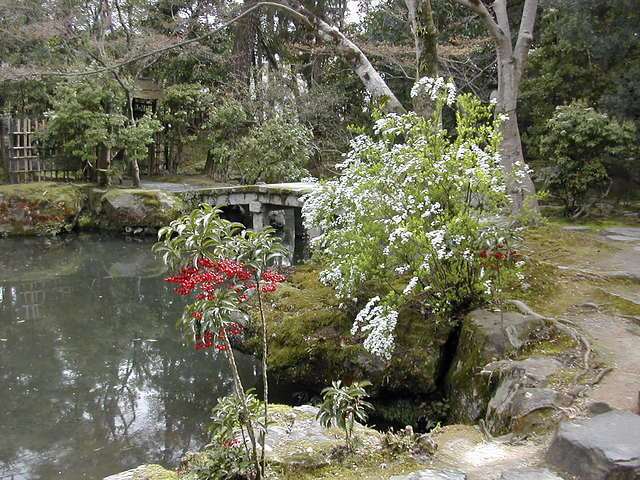
Early summer sees the iris bloom; of the three species found in Japan, the Encarta is most common and is grown in damp or wet boggy conditions. The best gardens to see these is the Horikiri garden in Tokyo, which has some 6,000 plants and 200 varieties. Koishikawa Koraku-en garden, also in Tokyo offers a good display. In Kyoto head for Heian-jingu shrine, Ryoan-ji lake or the lesser known Ota shrine pond. Many of the great gardens, such a Kenroku-en in Kanazawa and Koraku-en in Okayama have good displays of irises in the streams and ponds.
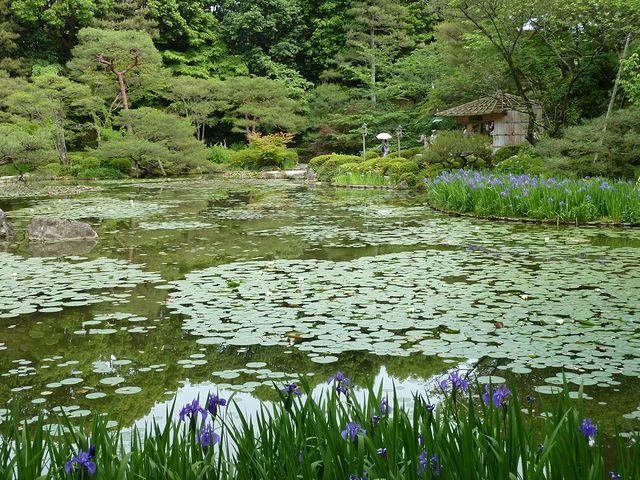
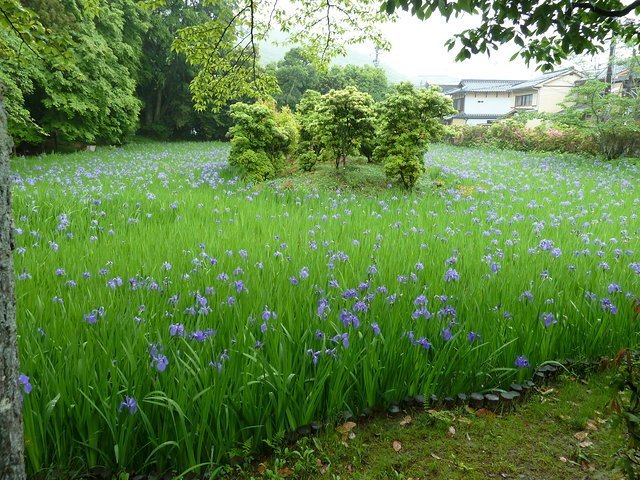
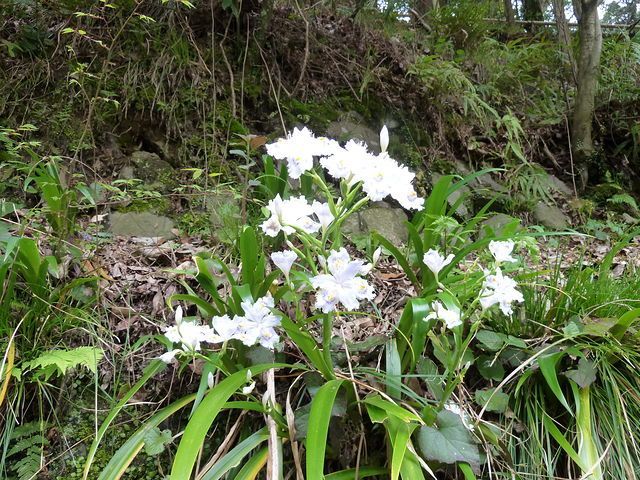
Above all June is the time to view the Hydrangea Macrofilia in it’┐Įfs cobalt blue glory. The flower garden of Mimurodo-ji temple near Uji boasts some 10,000 plants on the other side of the valley to the azaleas. Kamakura is also well known for it’┐Įfs hydrangeas in many of the temple gardens, notably Meigetsu-in temple, which also has an iris garden behind the temple and on the hill behind Hasedera (Great Buddha) temple. (images available on Japan-guide.com).
Moving further north into Hokkaido and in July, the lavender fields of the Tomito farm, Furano offer a vista full of colour. Later in the season they are joined by poppies, cosmos, lupins, lilies and sunflowers.
The rains of mid summer give way to the heat and humidity of high summer when the Lotus is to be found flowering on it’┐Įfs extended stalks reaching for the sky in many of the ponds in temple gardens and parks. Displays can be seen at Tenryu-ji temple, Shokoku-ji in Kyoto and Mimurodo-ji temple near Uji.
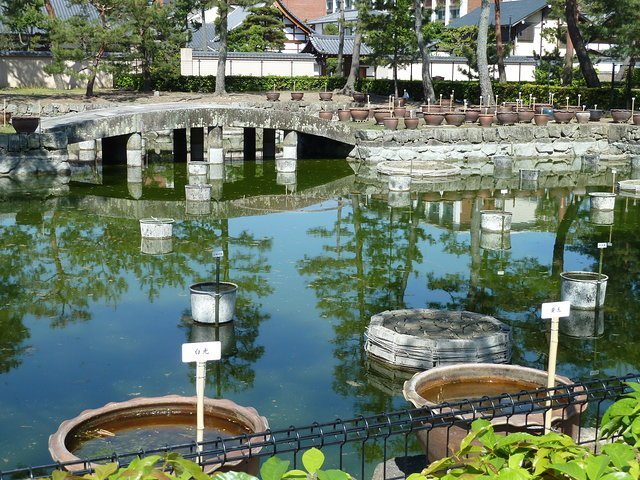
Japan is famous for it’┐Įfs moss, more so than our lawn! The moss temple of Saiho-ji near Arashiyama boasts over one hundred varieties and looks resplendent in the dappled light on a sunny day. Nearby Gio-ji temple and Okochi sanso are also well known for their moss gardens. A personal favourite is the back garden of Koto-in temple in the Daitoku-ji complex in Kyoto. The maple hill of the Sento Gosho palace garden looks stunning in the sunlight with dappled light playing on the moss.
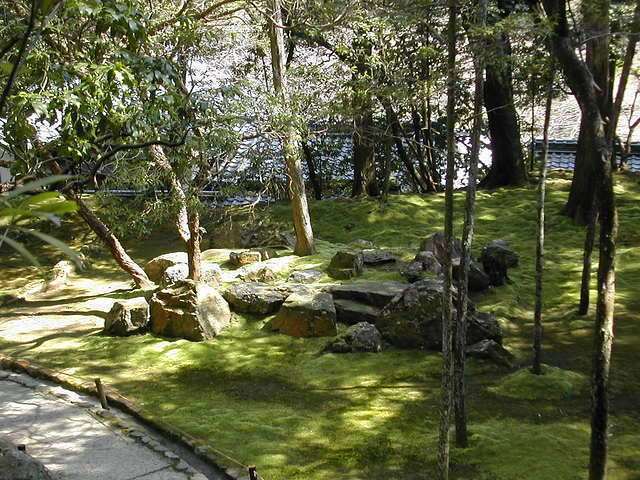
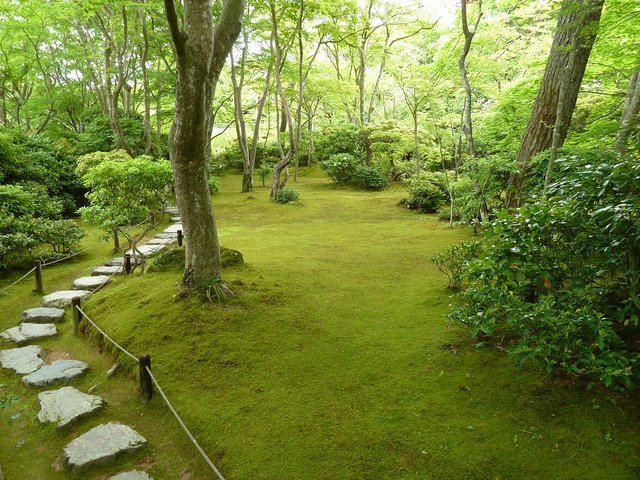
Another favourite temple is the less crowded Rozan-ji temple, where Lady Murasaki Shikibu lived for a few years some millennia ago. It was here, in part, that she is attributed with writing her novel ’┐ĮgThe Tale of the Genji’┐Įh describing a colourful and somewhat decedent Heian court life. The temple garden is known for it’┐Įfs Campanulas, which grow out of mossy areas, said to represent the shadow of passing clouds.
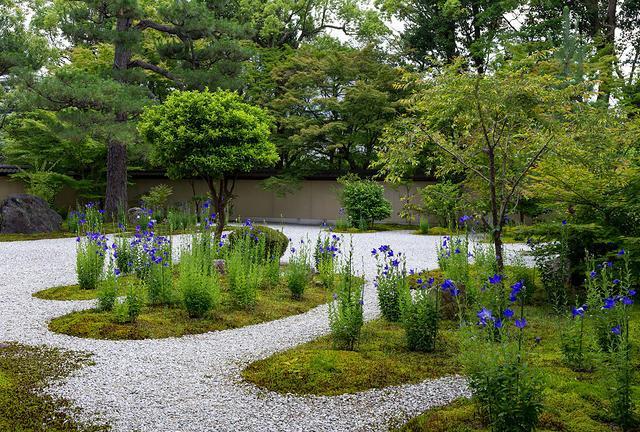
Finally we arrive in Autumn, where the acers in the boreal forest start to change colour in October with the colour changes from the greens and red of summer turning vibrant in the Autumn sun and at lower altitudes throughout November. The Koyo spectacle has started and with it the tourist hordes. Kyoto is famed for it’┐Įfs Autumn colours and like the Sakura reporting of progress, the Koyo is similarly tracked. The Tsutenkyo bridge at Tofuku-ji got so crowded last Autumn that the covered bridge overlooking the maple ravine had to be closed on safety grounds. The mountainside beside the Hozu gorge in Arashiyama or nearby Nison-in temple is another favoured, easy accessible spot but the mountains that surround Kyoto offer a variety of spectacle during the earlier part of the November ? Takao, Ohara and Kurama. But a fiery favourite must be Eikando temple.
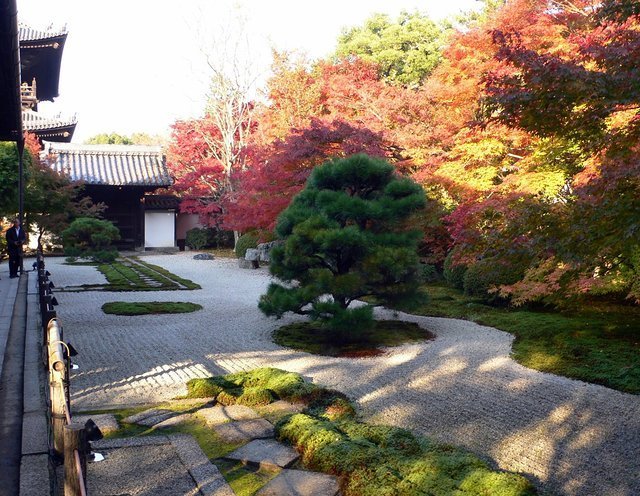
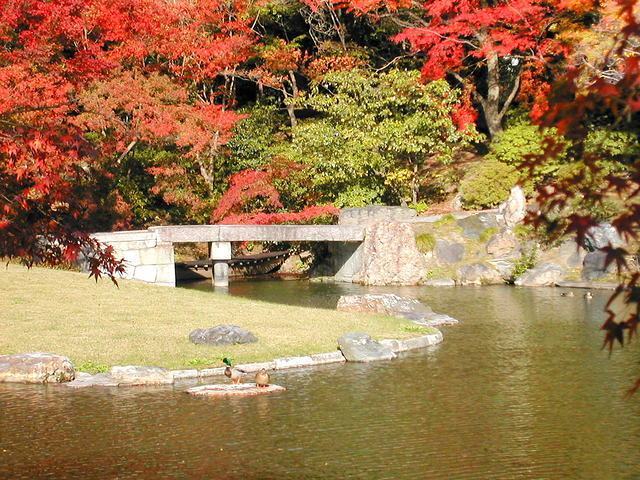
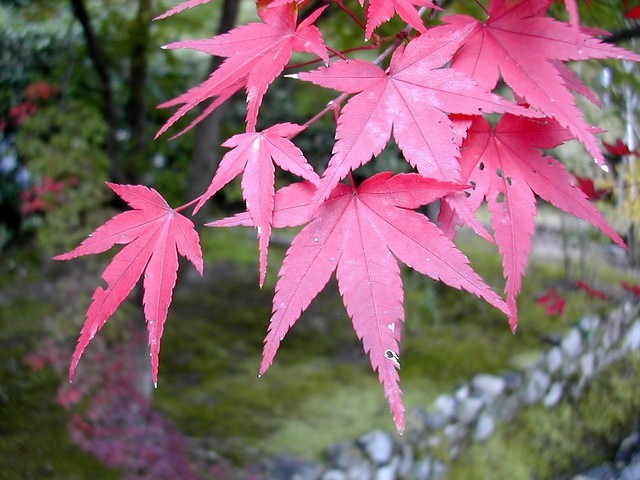
One must not forget the ’┐Įgfriend of winter’┐Įh with the bamboo rustling in the winter winds and the pines thrusting up against the winter snows; heavy enough on the Japan coast to require substantial supports against snow damage. Bamboo is native to Japan and commonplace, with forests of it in the temperate southern countryside. One place known for it’┐Įfs bamboo grove is the path at the back of Tenryu-ji temple in Kyoto often used as a backdrop for publicity and wedding photo-shoots. Many of the machiya courtyard gardens in the merchants houses contain a single bamboo to provide an aural element to the garden. Some temples including Myoken-ji have a larger bamboo courtyard garden.

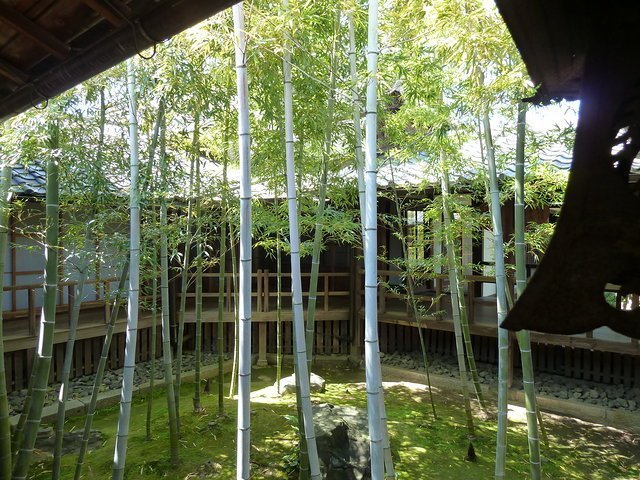
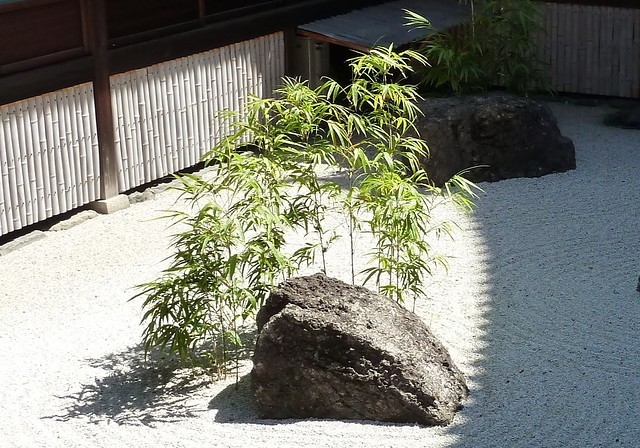
Because of Japan’┐Įfs volcanic nature and acid soils, pines flourish in many areas of the countryside and as a staple tree, planted in the garden. The black pines flourish particularly well on the coastal fringes, whilst the white and red pines may be seen in most inland gardens and forests. In the sub-artic zones of Hokkaido the stone pine flourishes at altitude. The garden pines are highly trained and manicured, often effectively as medium sized bonsai trees. The pine forest at the Adachi Museum garden at Yasugi is a classic example of such perfection.
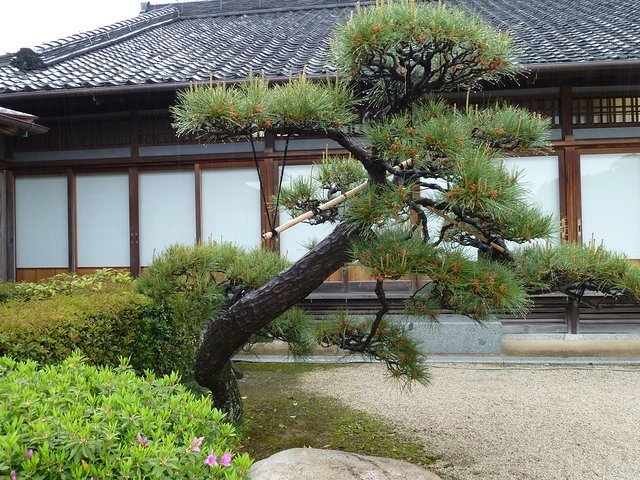
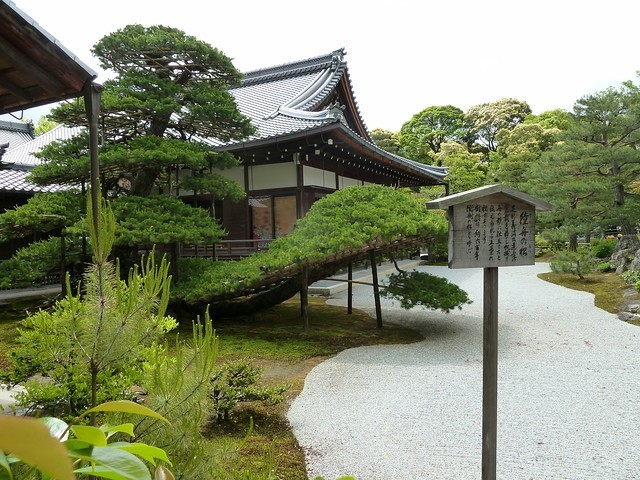
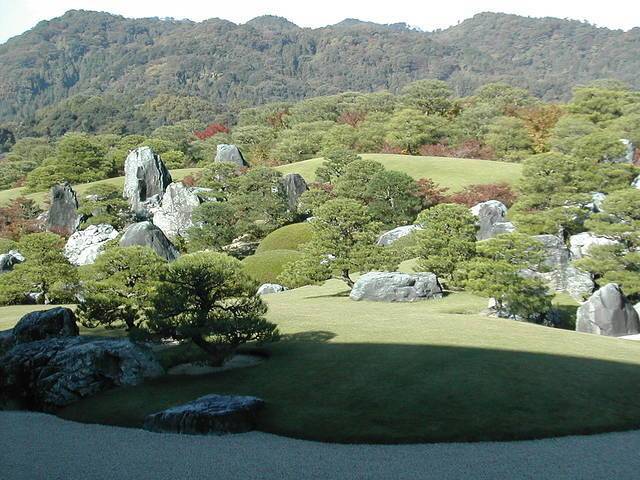
Finally, on this abridged list, one must not fail to mention the national flower of Japan, the chrysanthemum. This image has appear on postage stamps and coinage since they were first published/struck. Remarkably these are seldom seen growing in a garden environment but each autumn without fail they are brought out in pots and displayed in many shrines and temples in the same way that they are shown at horticultural events in the UK; i.e. benched. They are grown as individual blooms, ’┐Įg1,000 bloomed’┐Įh display from a single plant on elaborate frames resembling shields, fans, etc. and as fabulous bonsai.
The season closes and the cycle of life is renewed another year.
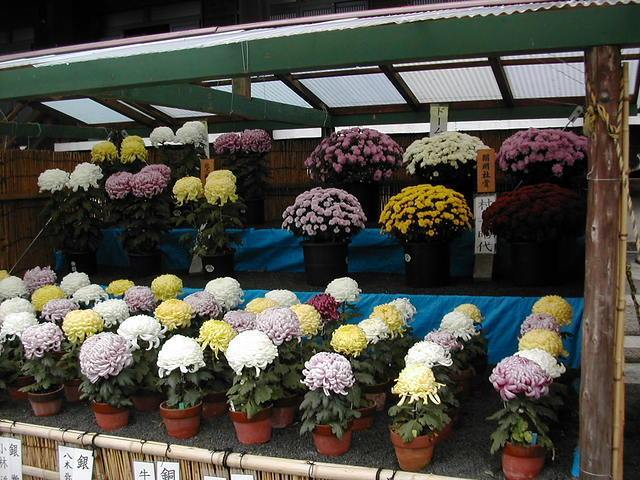
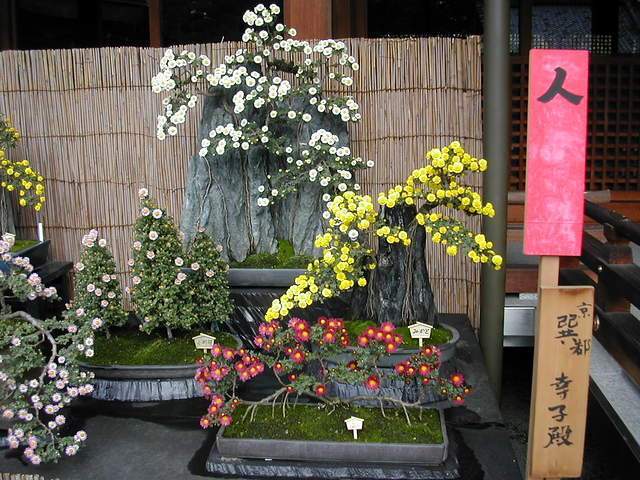
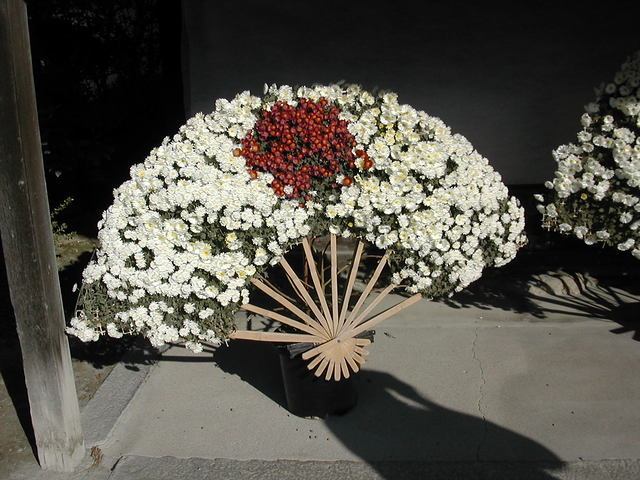
| previous post |
| next post |
|
List of Posts:
2017/07/25 - Japan's tectonic landscape reflected in the gardens 2017/07/15 - Flora of Japan 2016/04/27 - Time in Asakusa 2016/04/25 - Kakunodate 2016/04/23 - A Thousand Cranes 2016/04/22 - Castle in the Clouds 2016/04/21 - The beauty of Koraku-en 2016/04/20 - Far from the Madding Kyoto Crowds - Part 1 2016/04/20 - Far from the Madding Kyoto Crowds - Part 2 2016/04/18 - A Day in the Mountains 2016/04/17 - Delights of Hikone 2016/04/16 - Nara Revisited 2015/01/03 - Kamakura temples and gardens 2015/01/01 - Takayama Temple Trail 2014/12/29 - Kurama - Kibune hiking trail 2014/11/10 - A visit to Himeji 2014/11/05 - Shigemori Mirei - The Rebel in the Garden 2014/11/04 - Arashiyama and nearby sights 2014/11/03 - The less visited sites of Nara 2014/11/03 - The gems of Matsue 2014/10/31 - Agon-shu Monastery 2014/10/30 - In the footsteps of the Shogun 2014/10/30 - Tale of the Genji |
